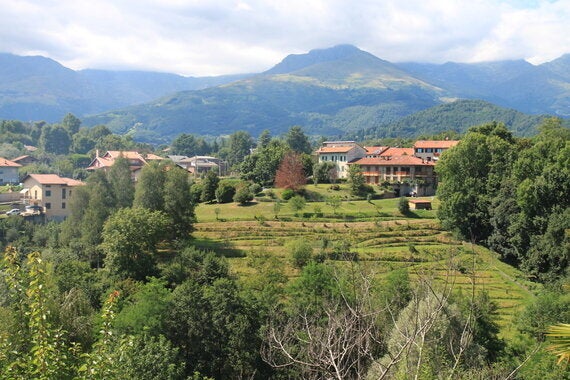
View from ancient Biella
In the heart of the Biellese Alps in Northern Italy flow the Elva, Oropa and Cervo rivers. In bygone days, these waterways powered important wool mills but now provide the main ingredient for the regions' favourite craft beer, Menabrea.
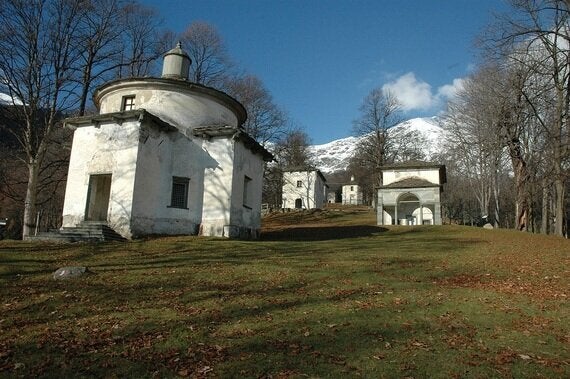
Sacro Monte di Oropa © Stefano Bistolfi
Clean, sweet smelling air floats down from the alpen hill tops and swirls around the courtyard. It swishes past the triangular set of wood that has been put up on the wall to protect the plaque depicting the area's saint: the Black Madonna. This spot is the start of a pilgrimage to the Sanctuary of Oropa in the nearby mountains, now an UNESCO heritage site. The breeze sweeps into the large round shaped building where horses were once exercised in readiness for making their daily deliveries. I can't quite believe this bustling brewery business is nestled into such small premises.
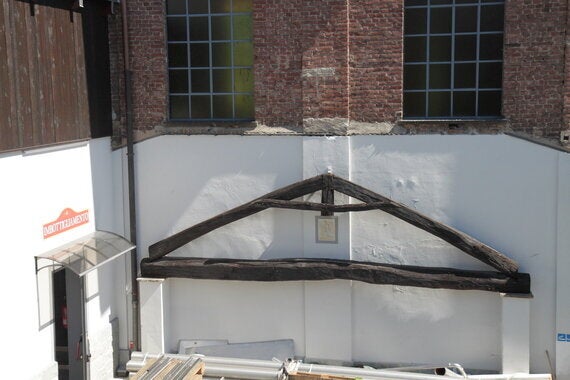
Beginning of pilgrimage at Menabrea Brewery
Biella was, in its recent past, a rural village (though it has grown significantly) and is located about 50 kms from Torino. It has been home to the Menabrea Brewery since 1846 and was started by the current owner Franco Thedy's great, great, great, grandfather. The pride the family exhibit in continuing the tradition of creating excellent craft beer is quite obvious.
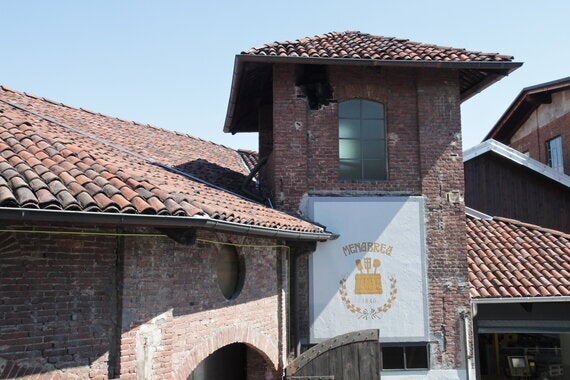
Biella's famous brewery
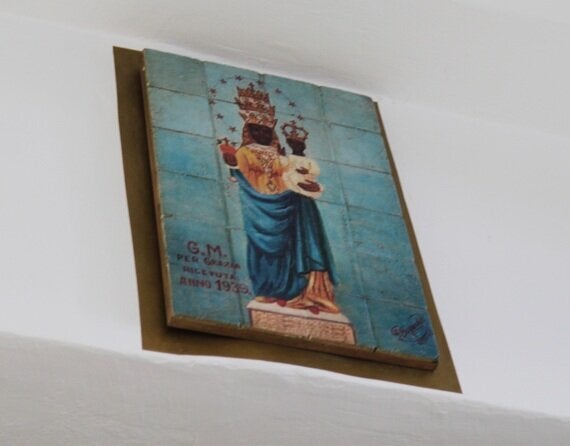
The Black Madonna
Our tour starts with the bottling operation. Another saint mounted on the wall oversees this and perhaps bestows a special blessing for its smooth running? It may not be a large operation but it is efficient and there is still an obvious human touch; workers ensure that packaging is perfect before dispatching.
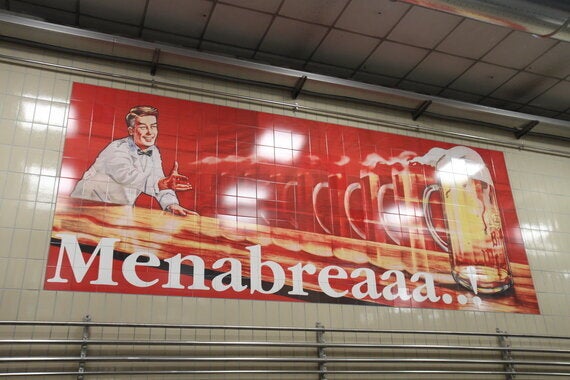
Brewing here is an art. Ingredients must be perfect. The water comes from the Madonna Sanctuary, the malt originates in Dijon, the hops come from Hallertau close to Nuremberg and the yeast is originally from Alloah, Scotland (though is now available from Denmark). Fifteen steel tanks hold 600 litres of the brew each. Two weeks of fermentation is stopped by cooling the liquid to zero. Then there is four weeks of maturation, no more, no less and woe betide anyone who suggests it be any less.

I try the finished product. The Bionde is light, fresh yet with a bit of depth. This will be my preferred beverage over the next couple of days.
After the tour there is lunch at the local trattoria Il Cicciocchio which offers fresh pasta, meat dishes and vegetables. There is no printed menu, the waitors and waitresses tell you what the chef has prepared and you select from that.
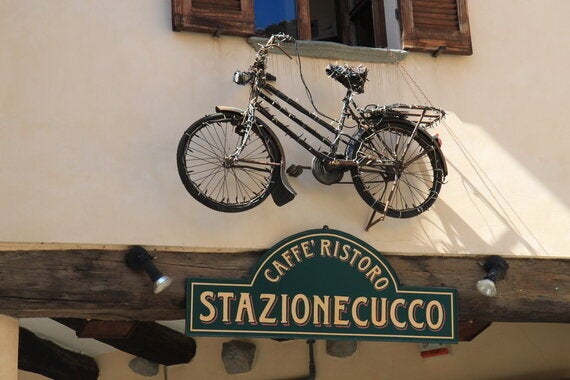
Cafe in Biella
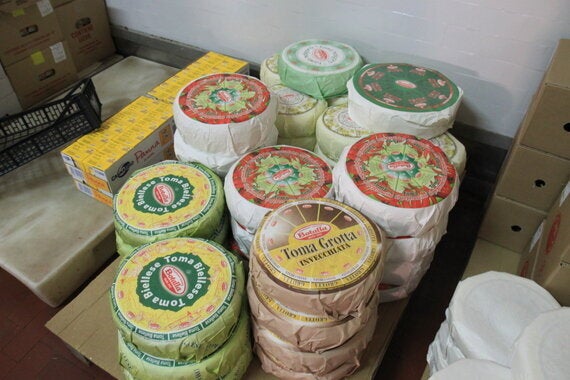
Botalla cheeses
Across the street from Menabrea and originally connected by an underground tunnel is the formagio (cheese) factory of Botalla. Descend into the basement and the distinct odour of ammonia greets the nostrils and olfactory glands. It is fascinating to learn how cooks create the cheese from the milk that arrives from their private herd of cows in the high alps. The cooking is followed by an extensive fermentation. There is even a cheese covered with spent grain from the Menabrea factory across the street.

Botalla 'beer' cheese
A busy day in Biella ends with a delightful outdoor meal at the Villa Carla. The items on the menu have been made with the areas top ingredients including birra. My favourite is a magnificent mushroom starter though the name is a bit convoluted: Variations on porcine con mousse con pianbress e Birra Weisz 5,2 Menabrea.
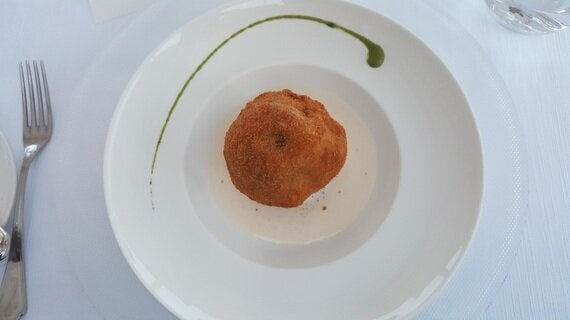
Porcine con mousse
Next on my itinerary is Torino, the city known as the powerhouse of the North. Torino (Turin) is where Fiat was manufactured and its factories were based here until very recently. The race track, that was used to try out Fiat's latest models, is preserved on the top of the Lingotto Shopping Centre. Well worth a visit for the views alone including the Olympic Torch from the 2004 Winter Games.
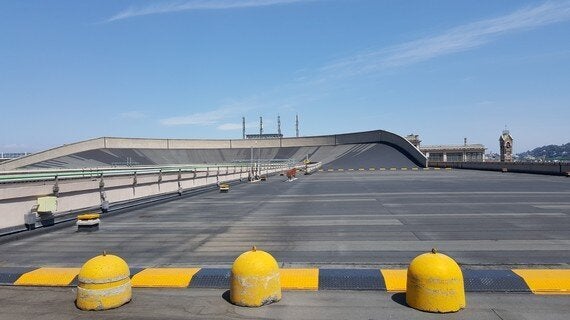
Racetrack on top of Lingotto Shopping Centre
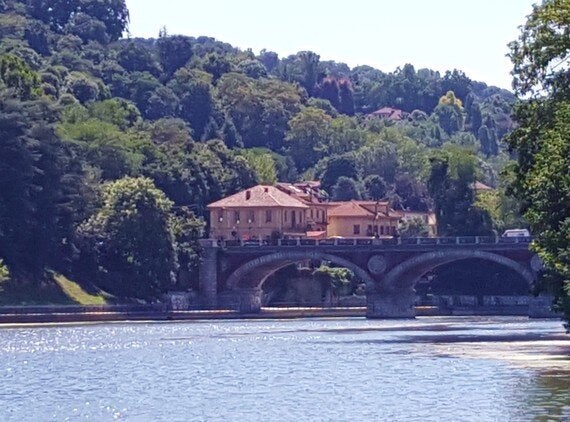
The River Po
A stroll through Valentino Park next to the River Po on a summer's day is a delight. Stumbling across a small medieval castle nestled amongst the trees is quite a surprise. We eat lunch at the Idrovolanti Restaurant on a sundappled deck as the river gurggles below us. I try out a Risotto with apple and cream followed by Scotatto tonno (seared tuna) served with a lovely olive tapenade.
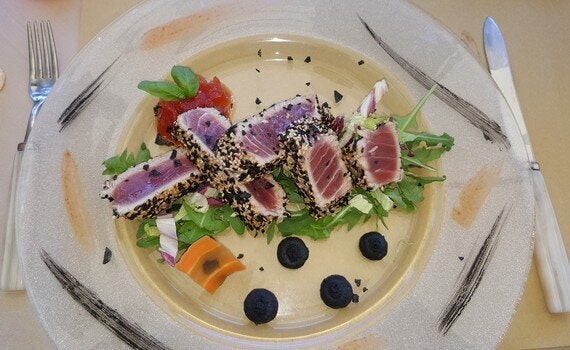
Scotatto Tonno at Idrovolanti Restaurant
A walk through the town is rewarded with a visit to the spectacular Mole Antonelliana. This is the location of the Museo Nazionale de Cinema which inhabits several upper floors. The neo-classical structure was built by Alessandro Antonelli and completed in 1889. Dominating Torino's landscape, the building rises 167.5 metres into the sky and has a vertiginous lift that takes passengers up to its mid-way point for spectacular views over the city.
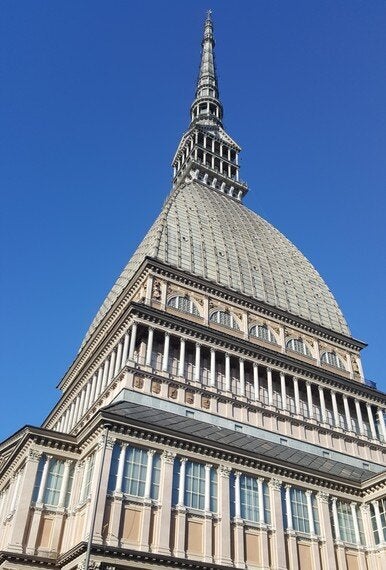
Mole Antonlliana
The evening closes with a scrumptious meal at Lentini's on Corso Moncallieri. Most order pasta and pizza but my main course is Alaskan black cod delivered in a wrapper alongside asparagus. Very fresh and healthy, though a bit of seasoning would not have gone amiss.
There is so much to experience in this quite stunning part of the world and I have, quite literally, only had a taste. It is well worth returning for the friendly people, the food and certainly the beer.
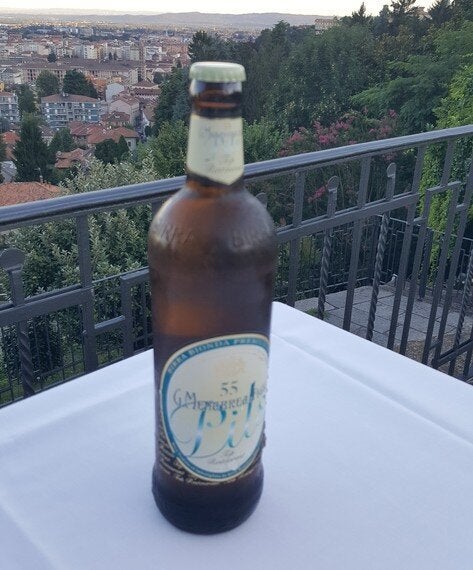
Images © Lynn Houghton unless stated
Lynn stayed at the Angorà Palace Hotel, Biella